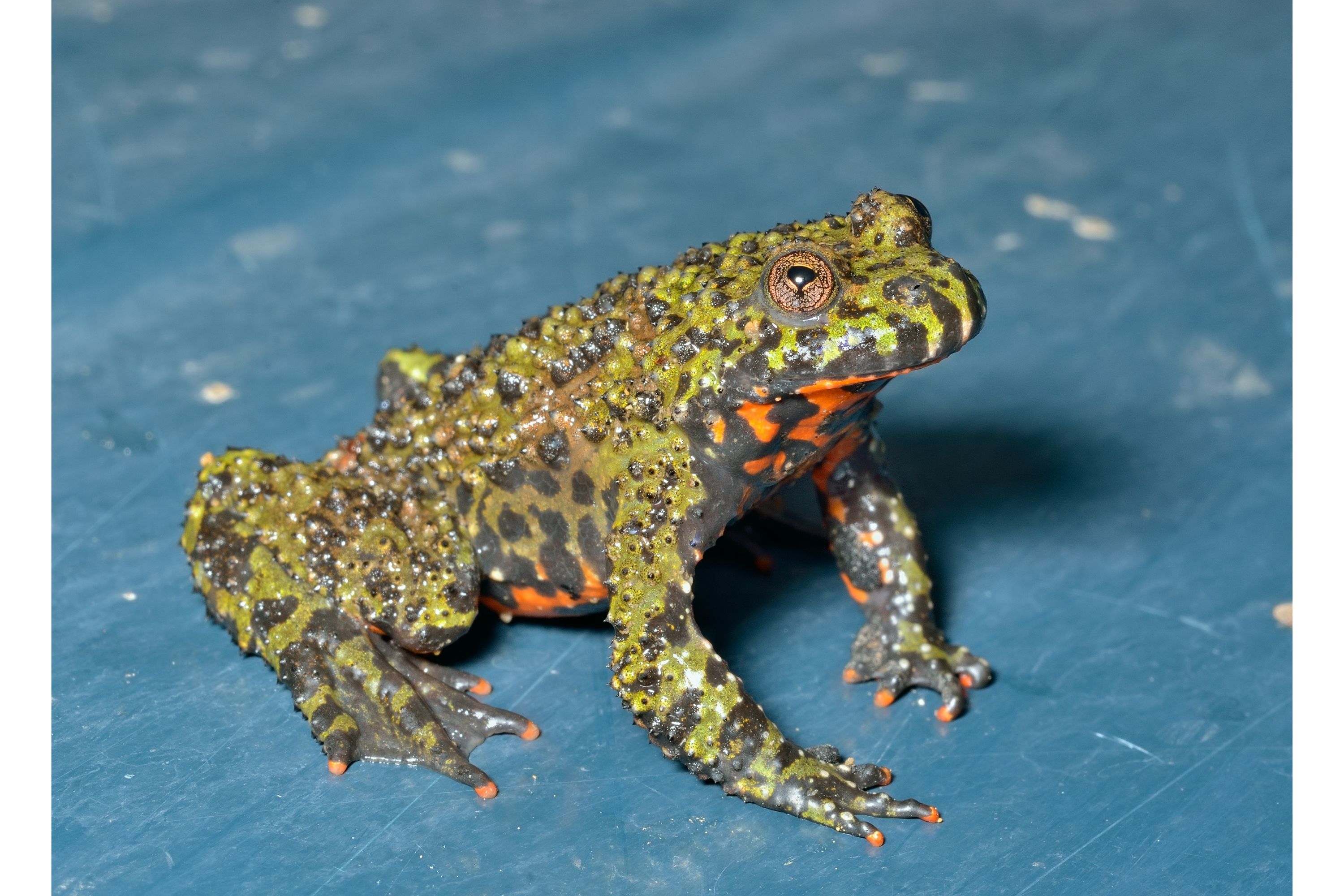Oriental fire-bellied toad
(Bombina orientalis)

Description
The Oriental fire-bellied toad (Bombina orientalis) is a small semiaquatic frog species found in northeastern Asia, where they primarily dwell in slow-moving bodies of water and temperate forests. Quite common throughout much of their range, these frogs have mild toxins that can be excreted through their skin, with their vibrant underbellies serving as a warning of this. While not a true toad, their green and black skin is covered in small tubercles, giving them a toadlike appearance. Their sounds, mainly produced by males during the mating season, are very unlike those of other frogs. While their population is in decline, their numbers are still high overall, with the International Union for Conservation of Nature (IUCN) rating them as a least-concern species. They are commonly kept as pets in land and water vivaria, as a relatively easy-to-care for species. They are also frequently used in scientific research, with their behavior, vocalizations, and learning skills all moderately studied. Oriental fire-bellied toads can be bright, grayish, or brownish green, with black mottling on their dorsal regions. Like other Bombina species, B. orientalis has a brightly colored ventral region, which can be yellow, red, or orange-red, mottled with dark spots. The finger and toe tips are usually red. The skin on its upper side is covered in small tubercles, the most pronounced of the genus Bombina. Although it is typically referred to as a toad, the fire-bellied toad is not a true toad. They can reach a length of about 3.8–5.1 centimetres (1.5–2.0 in), weighing about 28–57 grams (0.99–2.01 oz). Males and females can be told apart by the males' nuptial pads on their first and second fingers. Besides having more noticeable tubercles on their skin, B. orientalis can also be distinguished from other members of Bombina by their lack of gular sacs (like B. pachypus and unlike B. bombina) and nuptial pads (like B. bombina and unlike B. pachypus, although later research has shown that males do in fact have a few, as previously mentioned). Subtler differences include their belly coloration, which is typically more red than yellow (unlike B. pachypus) and bright finger tips (unlike B. bombina).
Taxonomic tree:







